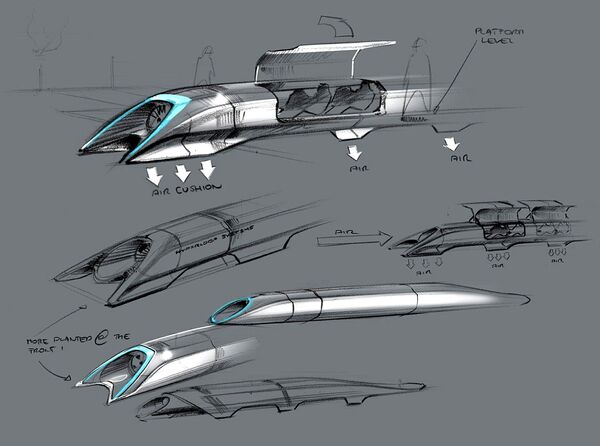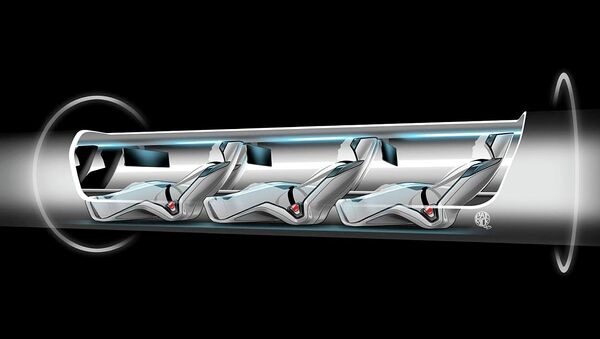MOSCOW, January 16 (Sputnik) — US technology entrepreneur Elon Musk has announced that he will be building a test track for his Hyperloop, a new step towards completing his much anticipated project.
Will be building a Hyperloop test track for companies and student teams to test out their pods. Most likely in Texas.
— Elon Musk (@elonmusk) 15 января 2015
To those unfamiliar with Musk's Hyperloop, it is a transportation system that makes use of pipes which vaguely resemble the pneumatic tubes used for transporting people and goods in the animated series Futurama, although users would be transported in pods.
His Tweet also gives the possible location of the future testing ground – "most likely in Texas".
Also thinking of having an annual student Hyperloop pod racer competition, like Formula SAE http://t.co/HV9BLCoMb8
— Elon Musk (@elonmusk) 15 января 2015
The entrepreneur is also thinking of having an annual student Hyperloop pod racer competition, like Formula SAE, a student design competition organized by the Society of Automotive Engineers.
Although the anticipated opening date of the facility has not been specified, the announcement means that Musk's 'pipe dream' idea is one step closer to coming true.
The idea of an innovative transportation system, however fantastic it might sound, was first expressed about a year and a half ago.
According to the plans and the project description available online, the idea is based on an enlarged version of the pneumatic tubes which are still being used at some places to send mail and packages within and between buildings.
"You could, in principle, use very powerful fans to push air at high speed through a tube and propel people-sized pods all the way from Los Angeles to San Francisco," the project says.
The Hyperloop system would thus transport passengers in aluminum pods traveling up to 800mph (about 1,287 kph), mostly following the route of Interstate 5, a highway in California. The estimated cost would be $6 billion for the passenger-only model, or $7.5 billion for a larger model capable of transporting cars.

The crafts would travel over air bearings, which Musk described as utilizing "the same basic principle as an air hockey table," allowing them to travel at supersonic speeds with extremely low friction.
For acceleration, the Hyperloop would use a linear accelerator — essentially a railgun – to shoot the pod via a traveling electromagnetic pulse. As the pod nears its destination, the process is reversed, and the pod decelerates using the same electromagnets; its kinetic energy is absorbed back into the system.
The route between Los Angeles and San Francisco was not chosen by accident. The distance of 381 miles (613 km) cars usually cover in 5 and a half hours. The Hyperloop is set to do it in less than 30 minutes.
The transportation system has apparently been designed for city pairs that are roughly 900 miles (about 1,447 km) apart. Shorter distances don't allow enough acceleration time, while for longer distances supersonic planes may end up being both faster and cheaper.

